Extreme Heat - Safety Tips
Due to changes in the climate, Nova Scotia is experiencing an increase in annual summer temperatures and extreme. Due to changes in the climate, Nova Scotia is experiencing an increase in annual summer temperatures and extreme hot days. Our region is one of areas that has been identified that will see increased episodes of extreme heat events. These events are dangerous for the health and well-being of our communities and can cause illness and even death. It is expected that Nova Scotia will experience an increase in hot days each year and by 2050, regions in Nova Scotia including Annapolis County, could see 6-10 days of 30-degree plus temperatures.
A recent report by the United Nation's Intergovernmental Panel on Climate Change warned global warming is intensifying and widespread but that a climate catastrophe can be avoided if action to reduce emissions is taken now.
It looks like July is going to be a warm one, according to the Global Ensemble Prediction System.
The forecasts are categorized as follows:

blue indicates the probability that temperatures will be below normal;

grey to purple indicates the probability that temperatures will be near normal;

yellow to red indicates the probability that temperatures will be above normal; and

white indicates uncertainty regarding the temperature tendency this month.

All categories are compared to the 30 months of July between the 1991-2020 period. This map is a prediction of the daily average temperature anomaly (difference from normal) at 2 metres, the standard forecast height. It is not a daily maximum or minimum temperature forecast.

Explore our long range products at: http://ow.ly/7qJU50JOsz6
Heat warnings are issued when high temperatures and humid conditions increases the risk of heat stroke or exhaustion (see more).

Nova Scotia’s Heat Alert and Response System
Heat alerts will be issued through the Heat Alert and Response System to inform Nova Scotians and community response partners when a heat event is coming. The new system is a partnership between Environment and Climate Change Canada, Health Canada, and the Nova Scotia Department of Health and Wellness
Heat warnings will be issued to inform the public when air temperature and humidex are above defined criteria so that they can take action to protect themselves from the risks associated with extreme heat.
When a heat alert is in place, advisories will be shared through Department of Health and Wellness Twitter and Facebook page. You can also visit Environment and Climate Change Canada website for more weather information.
If your organization provides services for those who are more vulnerable to heat, you may subscribe to Environment Canada’s email alert system.
EXTREME HEAT - SAFETY TIPS





Extreme Heat - Who is at Risk?
EXTREME HEAT - WHO IS AT RISK?
Extreme temperatures pose a greater risk for young children, pregnant women, older adults, people with chronic illnesses and those who work and exercise outside.
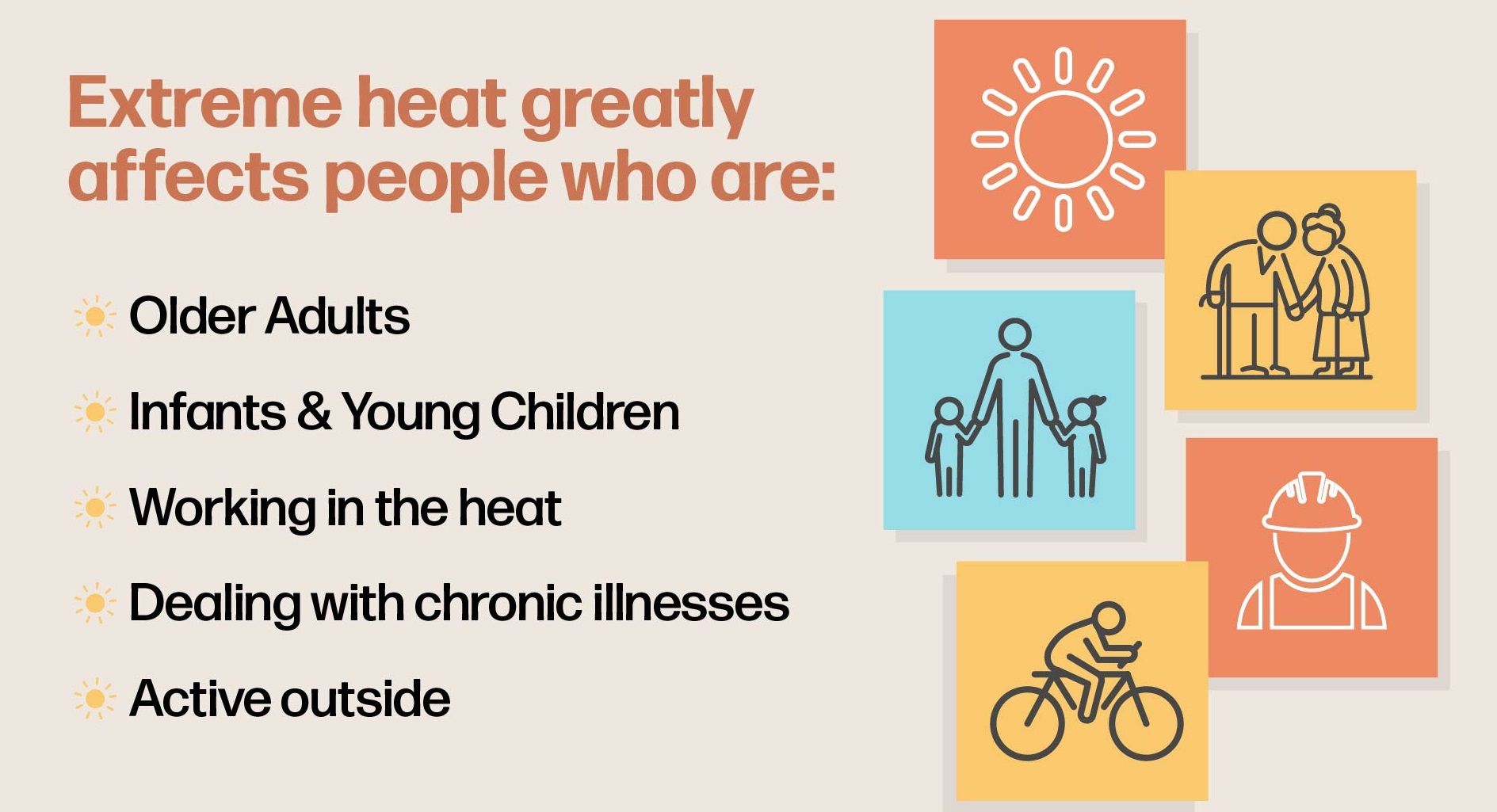
For more information on specific at risk groups see:
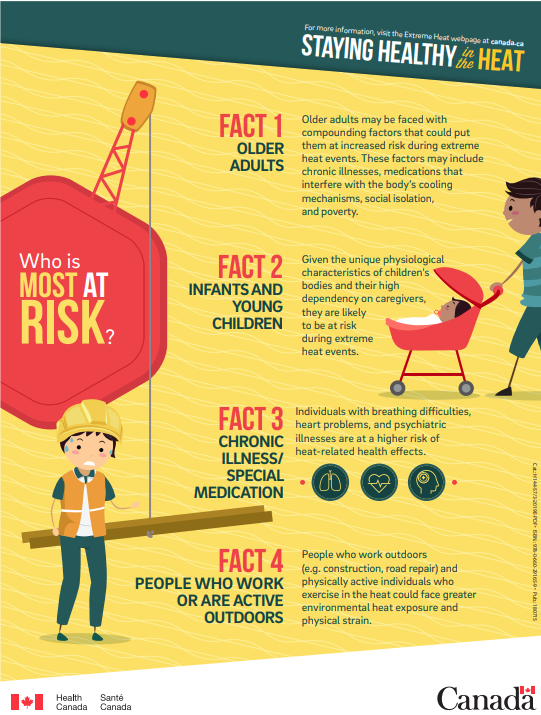
Health Checks
Health checks during extreme heat events One way to reduce the public health impacts of extreme heat events is to check in regularly with susceptible people to see how they are coping https://ncceh.ca/documents/guide/health-checks-during-extreme-heat-events
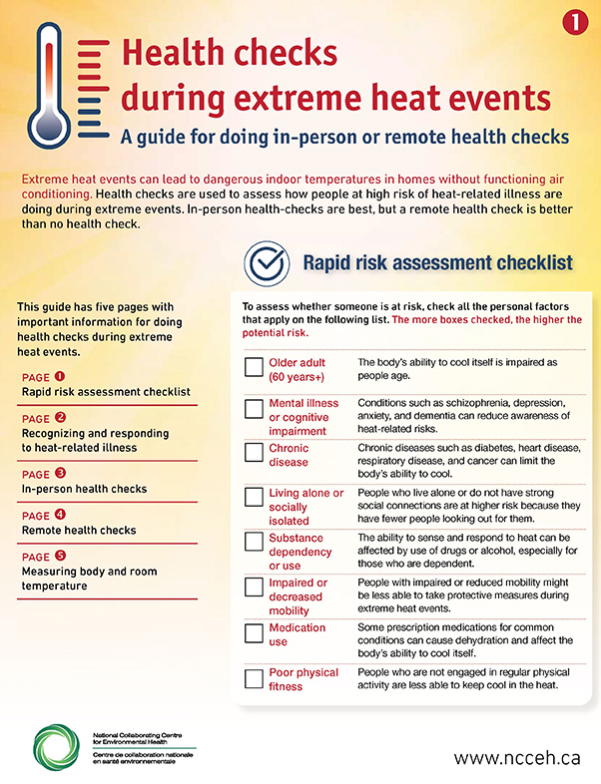
Extreme Heat - Heat Related Illnesses
EXTREME HEAT - HEAT RELATED ILLNESSES

High temperatures and humidity can put you at risk for heat-related illnesses, especially if you're working or exercising outside.
It’s harder for our bodies to maintain a healthy internal temperature when it’s hot and humid. Our bodies usually cool down by sweating, but sweating is less effective when it’s humid.
Some people, like infants and young children, seniors, and people with chronic medical conditions, have a higher risk for developing heat-related illnesses.
Preventing heat-related illnesses
- drinking plenty of water
- staying in shaded or cool areas
- taking frequent breaks if you have to work outside
- wearing lightweight, light-coloured clothing
- avoiding leaving children, infants or pets unattended in vehicles
- checking on older neighbours and others vulnerable to heat-related illness, and offer air-conditioned shelter and water if needed
Symptoms and treatment of heat-related illnesses
If recognized early and treated properly, a mild illness can be cured and prevented from progressing to something more severe. However, people might not always show symptoms before they develop a more serious illness.

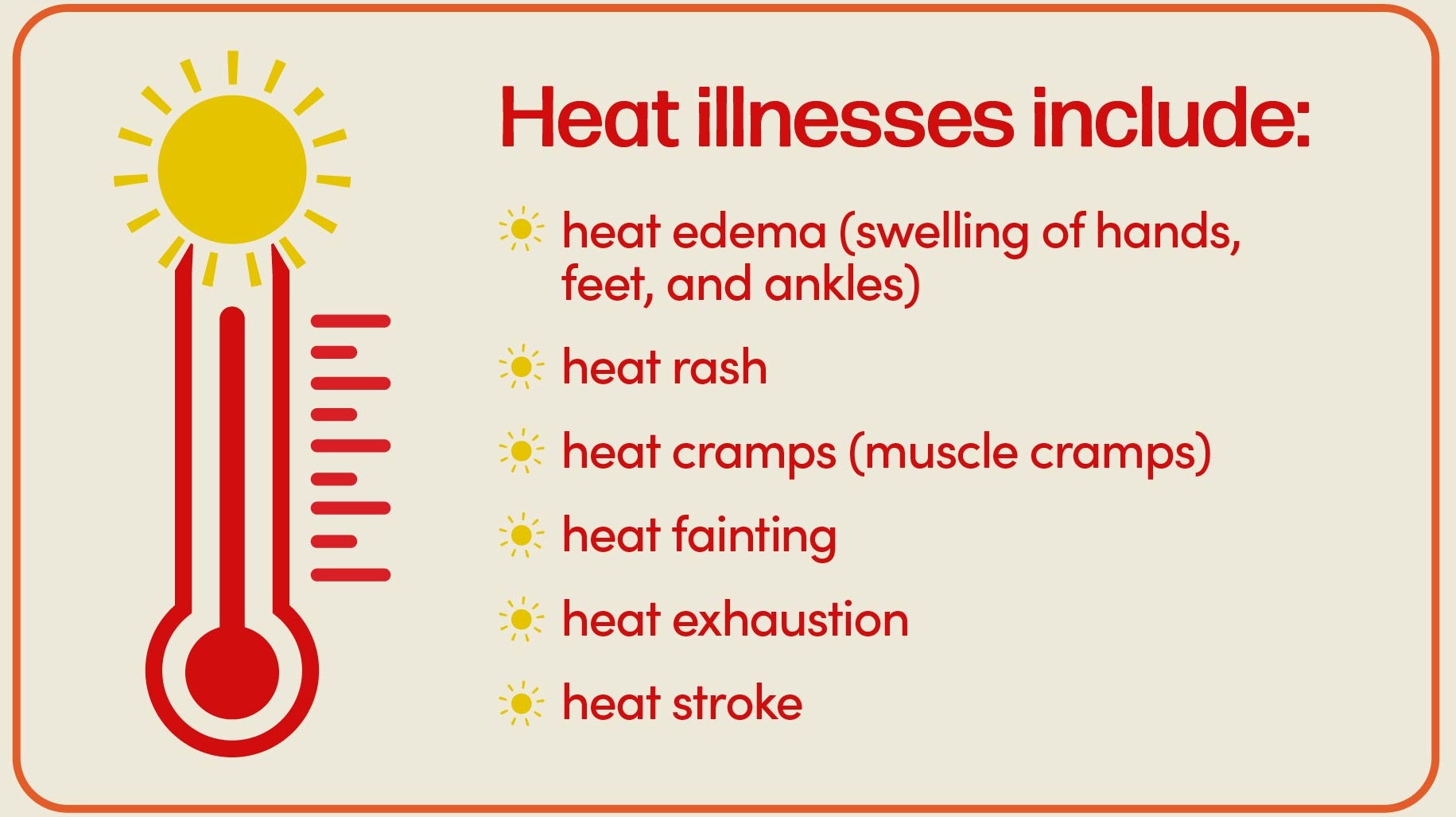
There are 4 kinds of heat-related illness, listed from mildest to most severe:
Heat cramps
Heat cramps cause spasms of the leg and abdominal muscles. If someone experiences these cramps, they need to drink water, rest in a cool area, and gently stretch and massage the affected muscles.
Heat syncope
If someone faints or almost faints, move them to a cool, shady area immediately and give them water to cool down their body temperature.
Heat exhaustion
The symptoms of heat exhaustion include:
- fatigue, weakness or reduced energy
- dizziness
- headache
- nausea
- rapid pulse
- heavy sweating
Anyone who experiences these symptoms needs immediate medical attention. Move them to a shady area and give them water. Remove any excess clothing and place ice packs or cold wet towels in the neck, armpit and groin areas.
Heat stroke
Heat stroke is an emergency and the person must be taken to the nearest hospital.
Symptoms of heat stroke include:
- confusion
- disorientation
- loss of consciousness
- seizures
Before they get to the hospital, you can help the person by putting them in a pool with cold or ice water and applying ice packs to the neck, armpit, and groin area.
For more information on heat and humidity, and tips on preventing heat-related illnesses, visit Health Canada
Extreme Heat - Pet Safety
EXTREME HEAT - PET SAFETY
The summer months can be uncomfortable (even dangerous) for pets and people. It's difficult enough simply to cope with rising temperatures, let alone thick humidity, but things really get tough in areas that are hit with the double blow of intense heat and storm-caused power outages, sometimes with tragic results.
You can keep your pets safe and cool this summer.

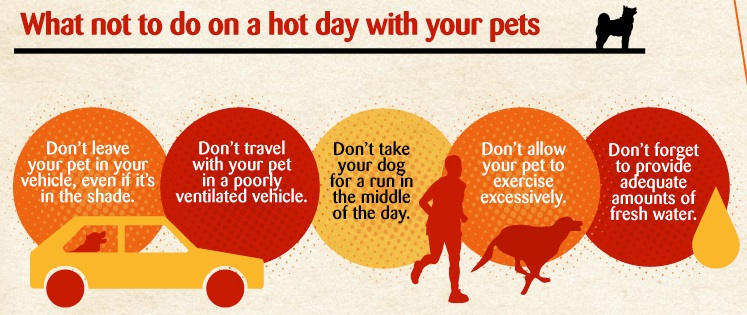




Click here and follow these great tips for helping everyone in your family stay healthy while hot.
Extreme Heat - UV Index

THE UV INDEX
Environment and Climate Change Canada developed the UV Index to inform Canadians about the strength of the sun’s UV (ultraviolet) rays. UV can cause sunburns, eye cataracts, skin aging and skin cancer. The higher the UV Index number, the stronger the sun’s rays, and the greater the need to take precautions.
PROTECT YOUR SKIN
When the UV Index is 3 or higher, protect your skin as much as possible. In general, the UV Index in Canada can be 3 or higher from 11 a.m. to
3 p.m. between April and September, even when it’s cloudy.
• Seek shade or bring your own (e.g., an umbrella).
• Wear clothing that covers as much skin as possible and a wide-brimmed hat
• Wear sunglasses or eyeglasses with UV protective lenses.
• Use sunscreen labelled “broad spectrum” and “water resistant” with a sun protection factor (SPF) of at least 30. Apply sunscreen generously and reapply often. • Avoid getting a sunburn and avoid intentional tanning.
• Listen for Environment and Climate change Canada’s UV Index – it’s included in your local weather forecast whenever it is forecast to reach 1 or more that day.


























